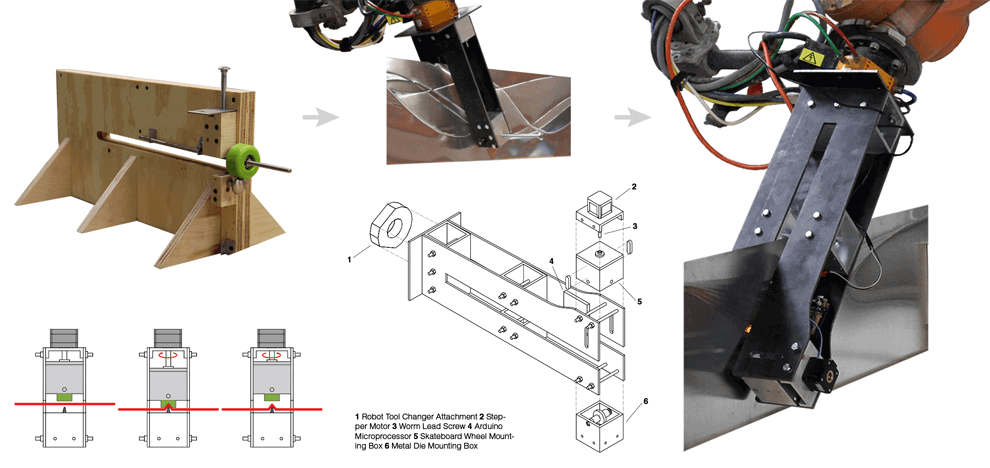Robotic Bead Rolling
The robotic workflow proposed analyzes the bead rolling process, its potential digital interpretation, and improved fabrication aspects that accompany such a translation. For this process, a robotic tool has been developed integrating multiple variables observed from existing bead rolling machines, while simultaneously allowing for further control. Finite Element Analysis is performed on samples given a set of user-defined load parameters and boundary conditions. A series of stress vectors are identified as locations of weakness and where bead corrugations are introduced as means of enhancing the sample’s structural performance. Vector direction is translated into robotic toolpath while vector magnitude drives the corrugation depth through the tool-mounted microprocessor. The tool allows the beading wheels to be mounted either parallel or perpendicular to the face of the tool. The jig ensures the metal sheet is in place during fabrication while allowing its rotation periodically. Robotic beading tool development for stressed skin fabrication provokes a wide range of applications from decorative panelling to shelving. This is due to the structural integrity it provides sheet metal and increase in rigidity.
By approaching material stock as an empty canvas and only treating areas that require additional strengthening, a smoother and simpler approach to strutural optimization is achieved. This instigates new formal languages that arise out of pure functional and numerical investigations. By varying the input mode beyond the suggested FE results, any algorithmically generated pattern could be easily formalized in the form of a rapid visual proto-type. Robotic bead rolling as an aesthetic impression and its associated play of light across corrugations has proven very provocative.


